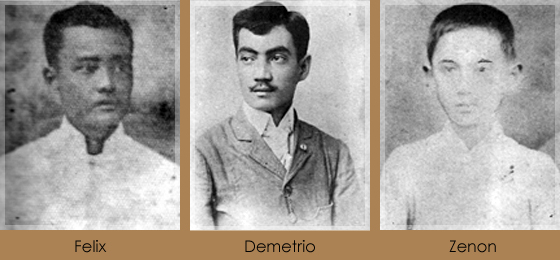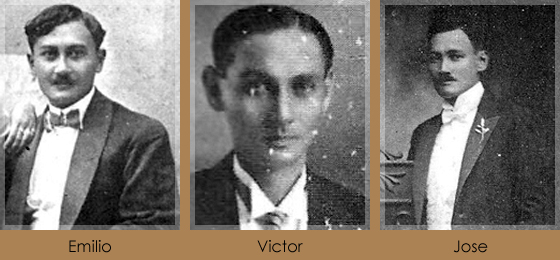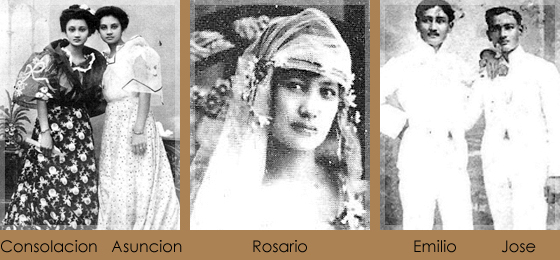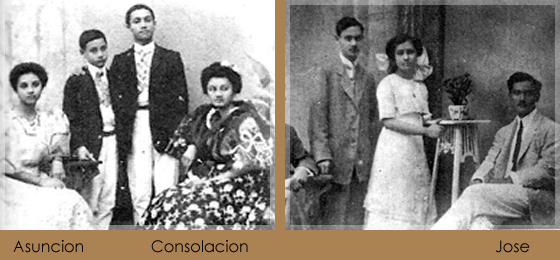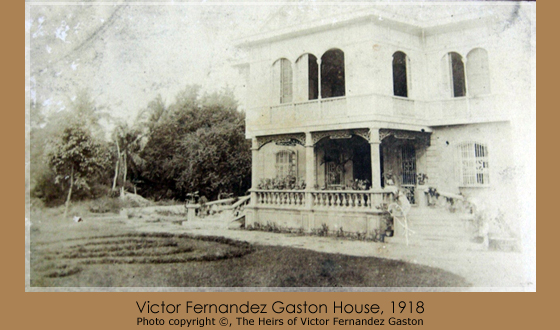![]()
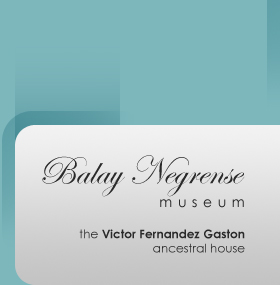

Victor Fernandez Gaston |
||
Victor Leopold Fernandez Gaston was born on November 23, 1850, in Silay (then still a town), province of Negros Occidental. He was the second of three children of Yves Leopold Germain Gaston of Lisieux, France and Prudencia Fernandez of Balayan, Batangas. Victor's father, Yves Leopold Germain Gaston, was a pioneer of the sugar industry in Negros island. A sugar technologist trained in Mauritius and Bourbonne, Yves was commissioned by Domingo Roxas, forebear of the Roxas-Ayala-Zobel and Soriano families, and brought to the Philippines around 1837. He was to direct the planting of sugar cane and to set up a mill in Roxas' newly acquired estate in Calatagan, Batangas. |
| However, the soil proved unsuitable for sugar cultivation, leading Roxas to give up the project and Yves to venture on his own and eventually moved to Negros island in 1844. He chose a stretch of land in BuenRetiro and established his sugar hacienda where by 1847, he had built a house and installed the first horno economico(steam run iron sugar mill) on the island. This allowed him to produce sugar in large quantities and soon established a reputation for the quality of his export sugar. Today Yves Leopold Germain Gaston is credited with being the first to engage in sugar cultivation on a commercial level.
It is not known when exactly Yves brought Prudencia Fernandez to BuenRetiro, but it is highly probable that they met when he was working for Roxas in Batangas. Once settled in Negros, they had three children – the oldest Maria Felicia, born in 1848, Victor, and the youngest Fernando, born in 1852. Yves died at the age of 57 and was buried on 30 May 1863 in the British Cemetery in Molo, Iloilo, at that time the resting place for all foreigners residing in the Visayas. The story has passed down from the older Gaston folk that Yves became very ill and decided to take his family back with him to France. But their journey was interrupted as he succumbed to his illness at their first stop which was in Molo, Iloilo. After his burial, Prudencia, Victor and his siblings returned to Hda. BuenRetiro. Victor Fernandez Gaston was 12 when his father died. Research has allowed only a fragmentary picture of his own life and person. What follows is what is known thus far, based on family interviews and archival documents, as recorded in an article written by one of Victor's granddaughters Consuelo Gaston-Maisto. Within a year after his father's death, Victor's education and that of his siblings was entrusted into the care of Don SoteroNessi, a Spanish European. While nothing more is known of the kind of education he provided the Gaston children, it may be assumed that he had credentials worthy enough to be approved by the French Consul in Manila. In his Last Will and Testament, Yves had specified that the French Consul was to be consulted and no expense spared for the education of his children. It could also be expected that Victor's mother Prudencia Fernandez had an influence on his formative years. She lived until 1875, the year that Victor turned 25. As explicitly provided in his father's Last Will and Testament, this was the age at which he was to assume his full inheritance and its corresponding duties. Archival records indicate that the administration of Yves Leopold Germain Gaston's estate was probably shared by Victor with his brother-in-law Manuel Suarez, who married his sister Maria Felicia in 1864, and eventually with his brother Fernando when he turned 25. While no records have been found yet clarifying how the siblings divided their inheritance, an Estadistica report establishes that by 1897, Victor was owner of the property known as BuenRetiro and Fernando of the property known as Binunga.
It was to this new site in Hda. Buen Retiro that Victor brought his wife and raised a family. In 1885, Victor married Filomena Maquiling with whom he had 12 children: Cenon, Emilio, Felix, Demetrio, Consolacion, Jose, German, Asuncion, Antonio, Victor, Rosario and Concepcion. Nothing more is known about Filomena, except that she was a native of Guinhalaran, Silay. She died in 1898, leaving Victor a widower at age 48. By that time, he had also become the guardian of his brother Fernando’s children after the latter’s death in 1895. THE CHILDREN OF |
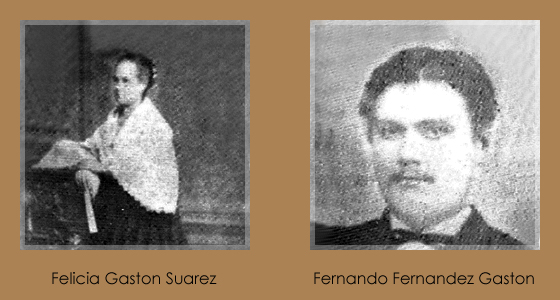
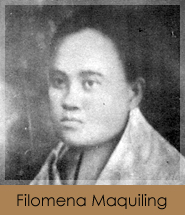 After his mother’s death, Victor continued to live in the house built by his father in Hda. Buen Retiro. But it was eventually moved to the present site in the hacienda where its ruins may still be viewed.
After his mother’s death, Victor continued to live in the house built by his father in Hda. Buen Retiro. But it was eventually moved to the present site in the hacienda where its ruins may still be viewed.